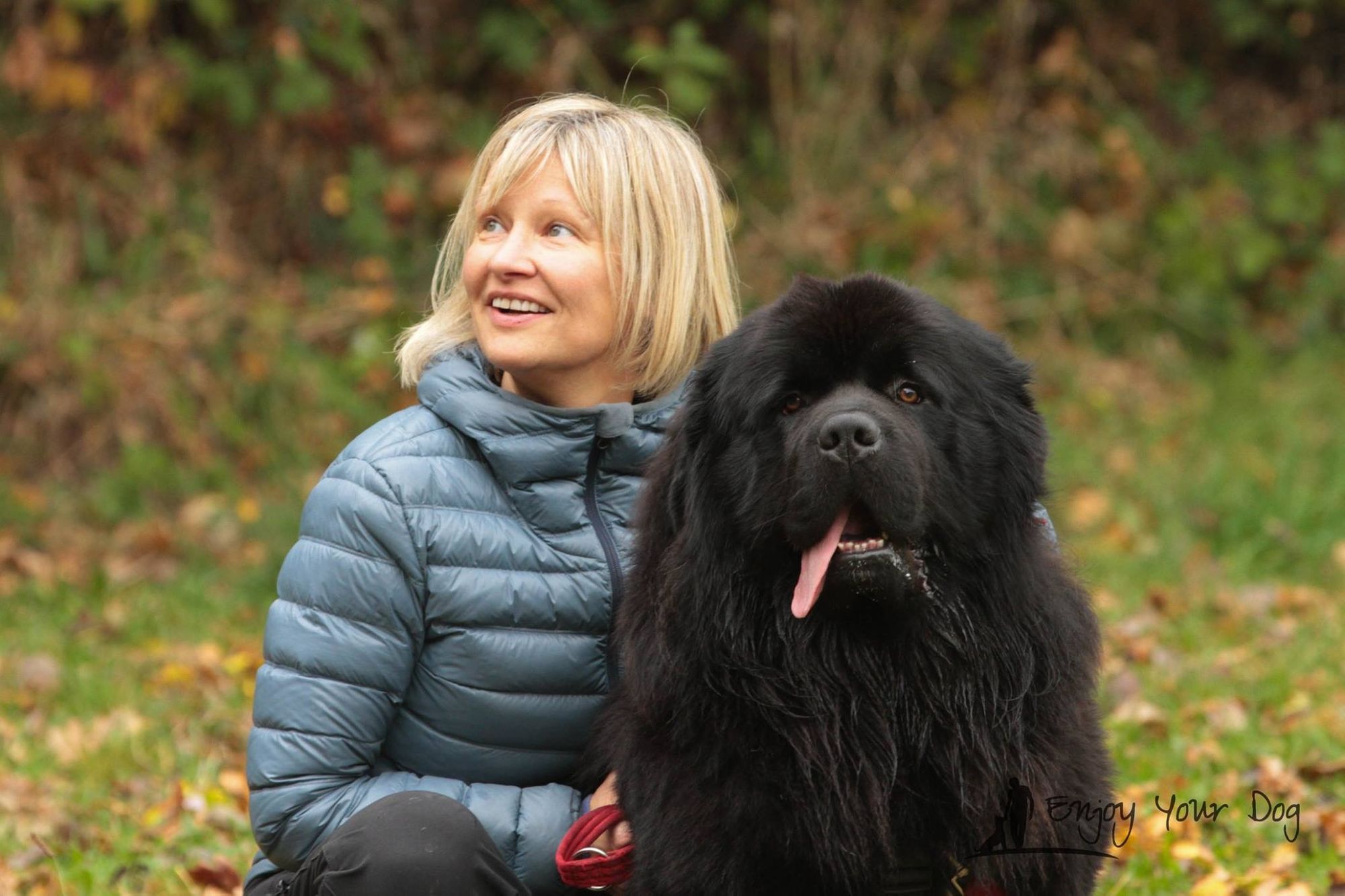What is it?
Often called separation anxiety, separation-related behaviour is a huge umbrella term for the distress responses of an animal when left alone (Horwitz 2000).
In dogs with severe emotional and behavioural responses to separation from their owner; their state is often consistent with that of panic (de Assis et al. 2019), comparable with an irrational fear or phobia.
“Separation related behaviour represents a significant, but largely unrecognised welfare problem” Dr Emily Blackwell (Blackwell, 2008).
The welfare issues are not just that of the dogs, but of the owners too, who may be facing huge financial implications if the dog is destructive, or a dog sitter is required whenever they go out. Complaints from neighbours may be an issue if the dog barks or howls incessantly in the owner’s absence.
However, it is important to discriminate between those dogs who are bored and not being sufficiently stimulated, both physically and mentally, those that are being opportunistically destructive, or those that are alert barking to the sight of the postman or a cat passing by the window. A diagnosis of separation anxiety would be made on the basis of a thorough behavioural history to exclude differentials such as these. However, one of the main differentiating features between separation-related behaviour and other clinical disorders with similar presentations, is that the behaviour signs are displayed within the first few minutes after, or at most within 30 minutes of the owners’ departure (Blackwell, 2008). These usually escalate until the owner gets home.
It is also important to mention that a medical evaluation from your family veterinarian is necessary to exclude certain medical conditions that may exacerbate a dog’s fear, or make the dog more susceptible to separation issues.
The most common symptoms of separation anxiety (de Assis et al., 2019).
- Vocalisation (barking, whining or howling)
- Destructive behaviour - usually involves chewing or scratching fittings or objects, and often occurs near the site of the owners’ departure.
- House soiling.
- Depression-like signs.
The symptoms of vocalisation, destruction and inappropriate toileting are also the most common owner-reported unwanted behaviours, probably because these are the most noticeable to owners and have the most impact on their lives. However, there are other separation-related behaviours that owners may not be aware of, for example, panting, hyper-salivation, pacing, anorexia and self- injury (Ogata, 2016).
These behaviours would not be obvious to an owner unless they had some video technology in their home when their dog was alone - sadly too many dogs are left to suffer in silence.
However, it is easy to get a camera set up to look at your dogs’ response to being left alone using your phone, tablet or computer, to give you a baseline to understand whether your dog is comfortable when you are gone.
If your dog does suffer from separation problems; now is the time to seek professional behaviour support as you will have had time to work through a desensitisation programme before COVID restrictions are fully lifted.
One of the most common features of dogs with separation-related behaviour is that their body language conveys stress, therefore part of the work the behaviourist does is to teach clients about canine body language to learn about anxiety signalling, so that during each step of the behaviour modification programme the dog is kept under the distress threshold and is able to works at a suitable pace.
How common is it?
Between 22% - 55% of the general dog population is believed to show signs of separation anxiety (Bradshaw et al., 2002), making up between 14 - 40% of dog behaviour referral cases (Storengen et al., 2014). With 9 million dogs in the U.K, this represents a staggering number of dog’s suffering with separation anxiety, many of which will go unreported with numbers potentially escalating as a result of COVID.
Why do some dogs react badly to being left alone?
Each dog’s response to separation may be different, they can show different signs and different intensities and frequencies of distress, however, it does not mean that because their response is less overt, that they are experiencing any less fear or panic. Think about your own response to a scary spider in the room, do you try and run away, do you scream, or do you freeze on the spot and go silent - dogs are exactly the same - underneath they feel equally terrified, they may just show it in a different way.
Historically, separation-related behaviour was seen as a result of over - attachment of the dog to the owner, with common misconceptions like letting your dog sleep on your bed making the problem worse. However, more recent research has called this into question, and instead emphases the importance of a strong, healthy bond with your dog which leads to more comfort and less distress (Blackwell, 2008).
Experiences during the socialisation period (between 4 and 16 weeks of age, depending on the breed) influence a dog’s behaviour later in life, and things that they are exposed to or experience during this period are accepted as a ‘normal’ part of life. Many dogs develop a negative response to social isolation because they did not experience this as a puppy (Blackwell, 2008).
Dog’s may develop separation anxiety following exposure to loud noise in the context of being alone, for example, thunder and lightning, fireworks or construction work in the area. The pet may subsequently anticipate this fear-provoking noise when returning to this context (Blackwell, 2008).
Separation related behaviour can be triggered, or become more severe following a change in the dog’s circumstances, such as a house move, staying in boarding kennels or a period of non-separation due to owner illness (Blackwell, 2008) or our forced isolation at home from COVID-19.
Treatment
- Managing absences and building new positive associations with being alone.
- Building the dog’s confidence; focus on enrichment activities.
- Establish and maintain relationships with dog walkers and other carers as these are essential when returning to work.
- Desensitisation programme - the gold standard treatment, that looks at identifying all the pre-departure cues to work into the behaviour modification programme.
- Avoid punishment.
- Many dog’s benefits from medication, therefore there may be recourse to refer to a veterinary behaviourist to discuss the various pharmacological options available. Medication can help reduce anxiety, creating a better environment for your dog to learn, and help them advance through the programme.
There is a lot of misinformation on the internet about all behaviour issues; people readily take advice from friends and family and are told that their dog will “get over it, given time” but separation anxiety gets worse, not better if it’s left untreated. Although treatment takes time, months rather than weeks, the majority of cases are resolvable if the owner is able to adhere to the programme, improving the welfare of the dog and giving the owner their life back!
Photo by Karin Hiselius on Unsplash
References
Blackwell, E. (2008). Separation-related behaviour in dogs. Veterinary Nursing Journal, 23(6), 13–16. https://doi.org/10.1080/17415349.2008.11013689
Bradshaw, J. W. S., McPherson, J. A., Casey, R. A., & Larter, S. (2002). Aetiology of separation-related behaviour in domestic dogs. The Veterinary Record, 151(2), 43–46. https://doi.org/10.1136/vr.151.2.43
de Assis, L. S., Matos, R., Pike, T. W., Burman, O. H. P., & Mills, D. S. (2019). Developing Diagnostic Frameworks in Veterinary Behavioral Medicine: Disambiguating Separation Related Problems in Dogs. Frontiers in Veterinary Science, 6, 499. https://doi.org/10.3389/fvets.2019.00499
Horwitz, D. F. (2000). Diagnosis and treatment of canine separation anxiety and the use of clomipramine hydrochloride (clomicalm). Journal of the American Animal Hospital Association, 36(2), 107–109. https://doi.org/10.5326/15473317-36-2-107
Ogata, N. (2016). Separation anxiety in dogs: What progress has been made in our understanding of the most common behavioral problems in dogs? Journal of Veterinary Behavior: Clinical Applications and Research: Official Journal of: Australian Veterinary Behaviour Interest Group, International Working Dog Breeding Association, 16, 28–35. https://doi.org/10.1016/j.jveb.2016.02.005
Storengen, L. M., Boge, S. C. K., Strøm, S. J., Løberg, G., & Lingaas, F. (2014). A descriptive study of 215 dogs diagnosed with separation anxiety. In Applied Animal Behaviour Science (Vol. 159, pp. 82–89). https://doi.org/10.1016/j.applanim.2014.07.006


